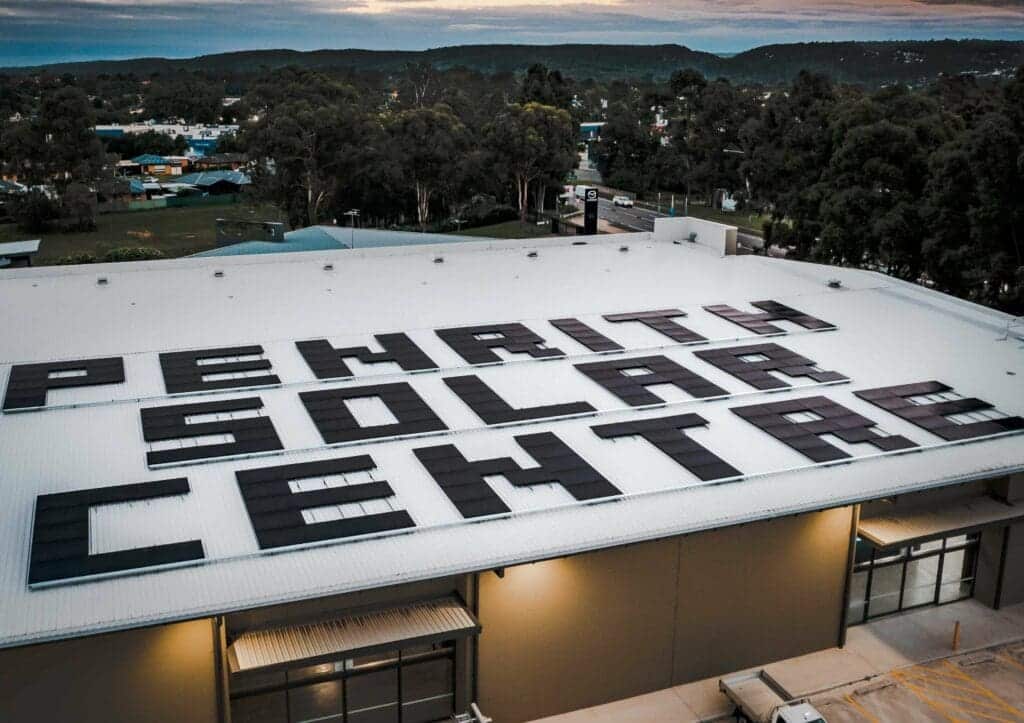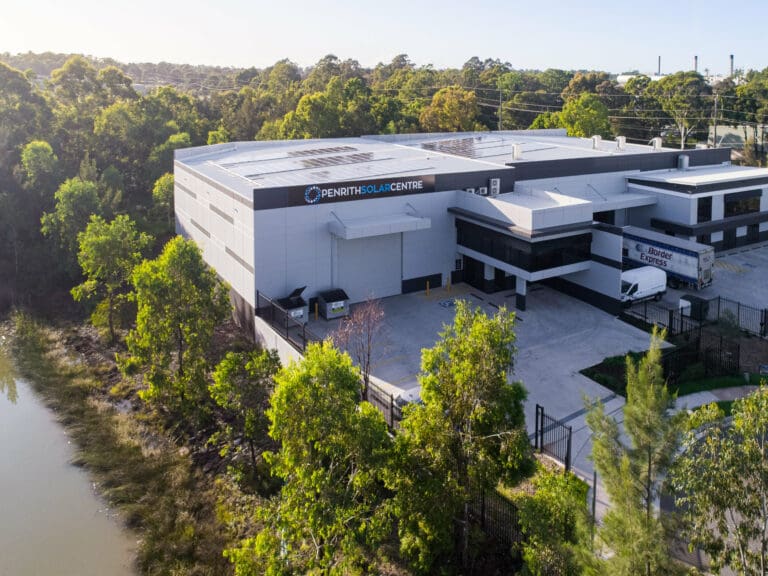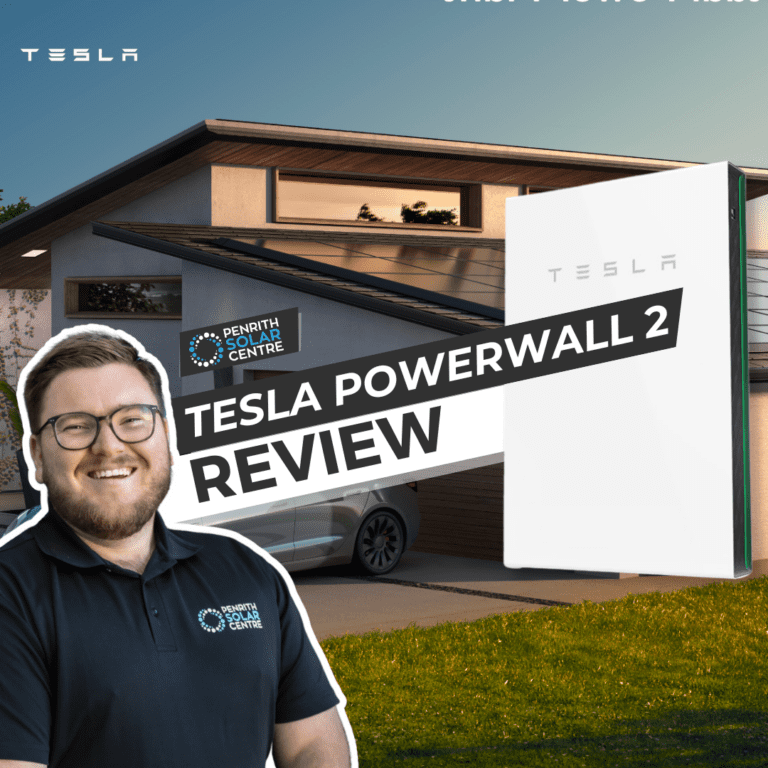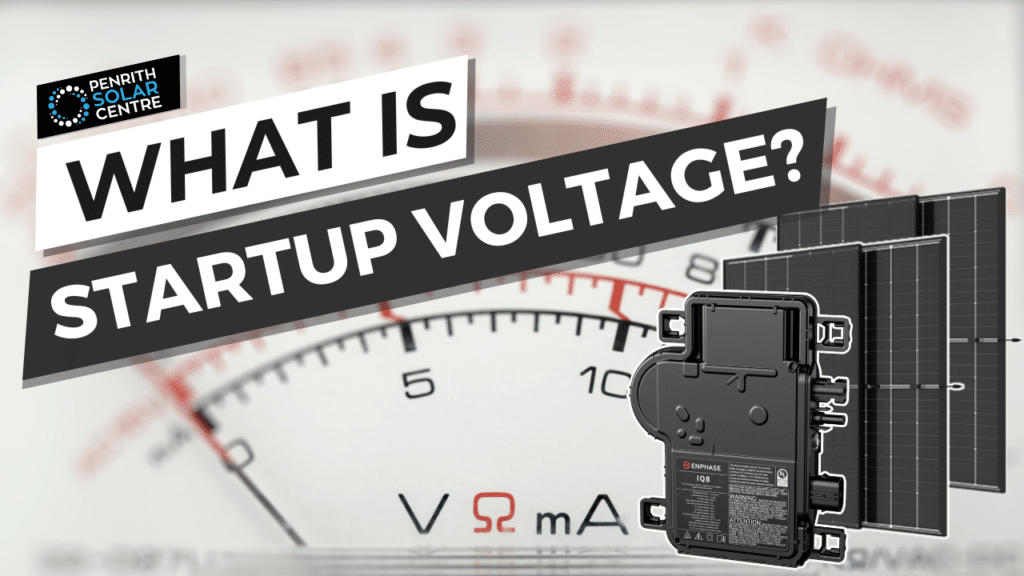
When do solar panels start producing electricity? When do they finish for the day? Does this matter when you’re choosing what type of solar system to install?
Yes, it does.
If you’re looking to maximise your solar system’s efficiency, you’ll need to consider startup voltage and how it affects your solar panels’ efficiency.
At Penrith Solar Centre, we understand that there are several technical terms that pop up when you’re deciding what type of solar system to install. Some of those terms require math, some require science, and they can all be answered by licenced electricians (we have so many on our staff!). It’s a lot of information to digest, but we’re here for you.
In this article, you will learn:
- What is Startup Voltage?
- How Does Startup Voltage Affect Microinverters and String Inverters?
- How Does Oversizing Improve Startup Voltage?
By the end of this article, you’ll understand what startup voltage is and how it affects your solar efficiency. You’ll be better informed and able to make some choices regarding your system based on that information.
What is Startup Voltage?
Startup voltage is easy to define. In the morning, the sun rises, and that sunshine reaches your solar panels. The panels need to receive a minimum amount of sunlight to create a current in the solar system which will turn the microinverters (or inverter) on.
Every inverter (or microinverter) has a minimum input voltage that it needs to receive from the solar panels to turn on. Without that minimum power input, the solar system won’t kick start.
As the sun rises, it shines more directly on your solar panels from above. When sunlight hits your panels at an angle, they are less efficient at harvesting that sunshine because the irradiation is diminished. But as it makes its way above our heads, it shines more powerfully on your panels.

If you’re interested in learning a bit more about how the angle of your solar panels affects their efficiency, you might want to check out the following article titled, Which Way Should Solar Panels Face in Australia?
Different inverters (or microinverters) have different requirements to trigger their functionality. Microinverters will kick on earlier in the day with less sunlight shining on them, whereas string inverters need more sunlight from the panels to start functioning. Let’s get into it.
How Does Startup Voltage Affect Microinverters and String Inverters?
Current is the flow of electricity.
Power = Voltage x Current
In our other articles in the PSC Learning Academy, we talk about power in terms of watts and kilowatts. These are units of measurement for power. The above equation can also be written as such using their respective units of measurement:
Watts = Volts x Amps
These are just different vocabulary words for the same equation. Power is measured in watts, voltage is measured in volts, and current is measured in amps.
In order for this article about voltages to make sense, we need to use the correct language.
At dawn, there is sunshine — but as you’ve noticed, it’s not as strong as it is at midday. The panel will produce voltage from that sunlight that’s hitting it from low on the horizon, but it won’t be much. The amount of sunlight shining on those panels will increase as the day goes on.
There won’t be any current (flow of electricity) until the microinverter turns on. Electricity is like water; it will always follow the path of least resistance. It won’t flow anywhere if there isn’t a current.

With an Enphase microinverter system, the startup voltage is 22 volts. The solar panel needs to be outputting between 18 – 58 volts for the microinverter to wake up.
The microinverter will turn on automatically when 22 volts are detected from a 50-volt panel. Current will be created, and the system will perform beautifully.
String inverters have startup voltage requirements as well. For example, the Fronius 10kW SYMO has an operating window from 270 volts all the way up to 800 volts. The startup voltage, however, is 200 volts – ten times the amount of power needed to activate an Enphase microinverter.
Now that amount of electricity is much higher than what a microinverter needs, but a string inverter has multiple panels outputting electricity to it whereas a microinverter is mounted under each solar panel to do the same job.
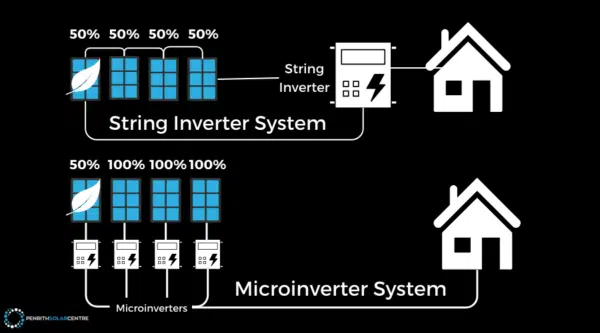
This next bit is going to get a little technical. There’s some math. Don’t worry, we’ll get through this.
The Fronius SYMO 10 (if it was designed and installed by a smart and forward-thinking installer) will be connected to somewhere between 11 to 13 panels. With that many panels collecting sunlight early in the morning, the Fronius SYMO 10 will actually turn on around the same time as an Enphase microinverter. And theoretically, they should both turn off around the same time in the afternoon.
However, if your installer has connected a Fronius 10kW SYMO to a string of panels that’s ten panels or less, there’s no way that the inverter will turn on earlier than one individual microinverter with one panel. Why is that?
If there are 5 panels connected on the string, those 5 panels will receive 50 volts each for a total of 250 volts on that string. When that inverter kicks on depends on when those panels will each receive 50 volts from the sun, combined together to output a total of 250 volts. A single Enphase microinverter only needs 22 volts. It’s a much lower startup voltage.
The better or bigger your solar system is oversized, the less those panels will have to work in the morning to turn on your microinverter (or inverter). Once your inverters are turned on, current will become present, and then that voltage multiplied by current equals power.
The microinverter (or inverter) will start producing power for the home once there’s enough sunlight to make that equation happen. It’s important for that inverter (or microinverter) to switch on as early as possible in the morning if you’re looking to maximise your solar system’s efficiency.
A microinverter will switch on earlier in the morning than a string inverter. The same is true for shutdown; the string inverter will switch off and stop operating once the sunlight dims and the panels can’t produce the minimum amount of voltage to the inverter. Microinverters that need less sunlight to output voltage, will produce energy later in the day than a string system.
You will get better performance from your system in the early morning and evening with a microinverter system because of the technology’s sensitivity to sunlight.
If you’re interested in learning a bit more about microinverters, you might want to check out the following article titled, Myths & Misconceptions About Solar Microinverters.
How Does Oversizing Improve Startup Voltage?
The solar panel converts sunlight into DC (direct current) power. The inverter (or microinverter) converts the DC power into AC (alternating current) power.
At Penrith Solar Centre, we install Enphase IQ8HC Microinverters that have a peak power output rating of 384W (that’s the maximum amount of DC power it can convert to AC power), and Trina Vertex S+ solar panels with a maximum power output of 440W (this collects the DC power that’s fed to the microinverter for conversion to AC power).
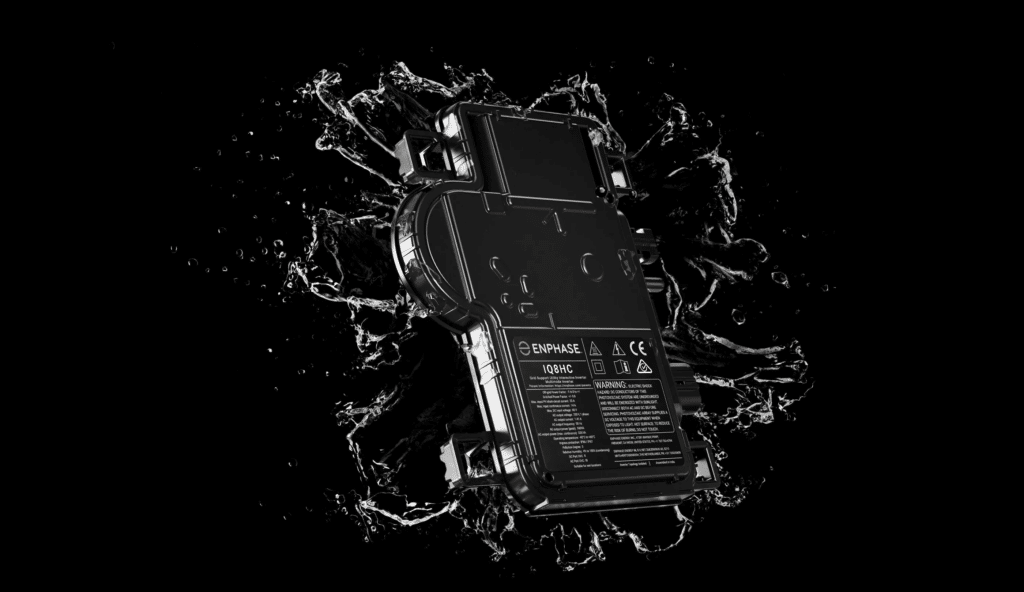
How does this relate to startup voltage?
If those panels are receiving sunlight much earlier and later in the day, then they will create voltage that the microinverter (or inverter) will detect earlier and later. The system will switch on sooner and switch off later because the panels are feeding more power to the microinverter (or inverter) than if there were less panels on the roof.
Because the panels can harness more sunlight than the microinverter can convert, they can send volts to the microinverter (or inverter) earlier and later in the day.
Try to think of it this way: the overall kWh generated throughout the day will be increased because the solar production window is longer.
If you’re interested in learning more about oversizing, you might want to check out the following article titled, What Is Solar Oversizing In a Microinverter Solar System?
Sunrise, Sunset: Wrapping Things Up
Now that you understand the importance of startup voltages, you’ll be closer to making some decisions about your solar system and whether it can meet your needs.
A microinverter solar system will kick on earlier in the day and continue working until later in the evening because it needs less sunlight to generate current than a string inverter solar system requires.
At Penrith Solar Centre, we work with you to build a solar system that will maximise your investment in clean energy and reduce your dependence on the electric grid. Choices that you make with your installation will save you money down the line.
For more information about how string solar systems compare to microinverter systems, you might want to read the following article titled, String Inverters vs Microinverters vs DC Optimiser: How Are They Different?
